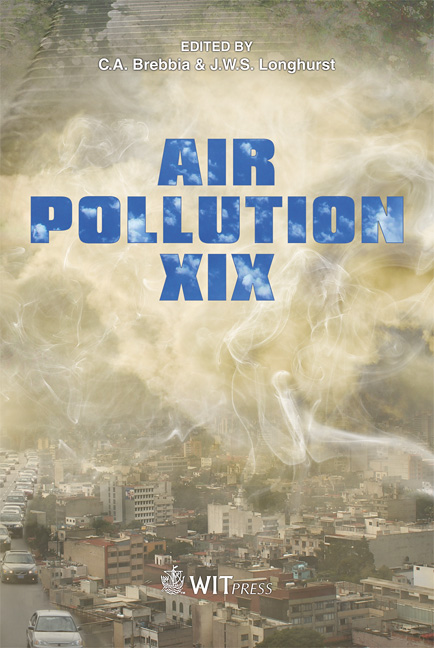Buildings As Sources Of Mercury To The Atmosphere
Price
Free (open access)
Transaction
Volume
147
Pages
8
Page Range
239 - 246
Published
2011
Size
617 kb
Paper DOI
10.2495/AIR110221
Copyright
WIT Press
Author(s)
G. F. M. Tan, E. Cairnsa, K. Tharumakulasingam, J. Lu & D. Yap
Abstract
Atmospheric gaseous elemental mercury (GEM) on the streets in the city core at various heights above ground, in parking lots, and in indoor and outdoor air was measured in Toronto, the largest city in Canada. The GEM in the indoor air ranged from 1.15 – 258.4 (average 12.54 ± 11.26) ng m-3 and was much higher than that in the outdoor air (average 1.89 ± 0.49). The average GEM in underground parking lots ranged from 1.37 – 7.86 ng m-3 and was higher than those observed from the surface parking lots. The GEM values increased with increasing elevation and increasing distance from building walls. All of these findings suggest that mercury used in the indoor environment has been diffused and emitted to the outdoor environment, thus, the buildings serve as sources of mercury of GEM to the urban atmosphere. More studies are needed to estimate the contribution of urban areas to the atmospheric Hg budget and the impact of indoor air on outdoor air quality and human health. Keywords: gaseous elemental mercury, urban atmosphere, source of emission, depth profiling, Toronto. 1 Introduction Mercury (Hg) is a persistent and highly toxic element (Sarikaya et al. [1]). It can be emitted from natural and anthropogenic sources, largely as gaseous elemental mercury (GEM) (Bagnato et al. [2]; Song et al. [3]; Goodarzi [4]). The atmosphere receives most of the mercury emitted from these sources (Goodarzi [4]), thus, it is the major pathway of transporting this toxic element. Elemental
Keywords
gaseous elemental mercury, urban atmosphere, source of emission, depth profiling, Toronto





